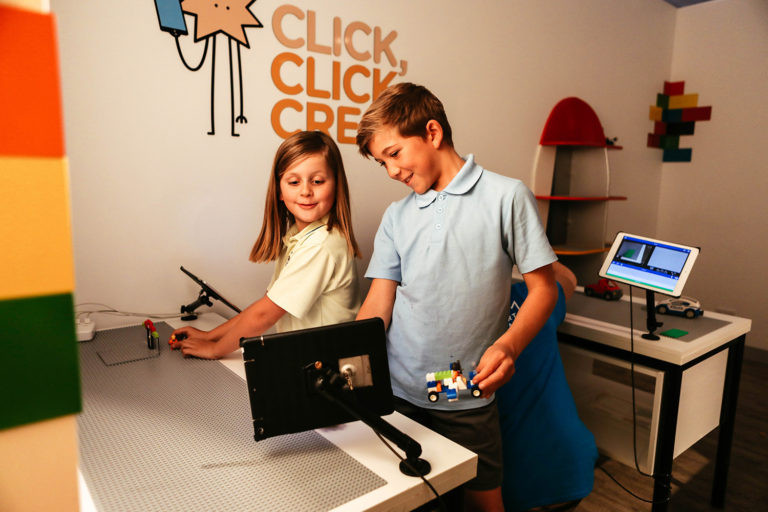Screens, learning and play
When we consider children and screens, it is easy to get caught up in the headlines. Three recent headlines include: “increased screen time affecting children’s eye health”, “screen time has increased by as much as 500% during the pandemic, but should local parents panic?” and “excessive screen time linked to obesity…”.
In reading these, we are right to raise questions about healthy media use, healthy screen time, and whether children are learning as they watch television and engage with screens. But, should we panic, ban all screens and consider all screen time as a negative thing for young children? In my opinion, we shouldn’t – instead, we should focus on two concepts 1) healthy screen time and 2) co-viewing. I will discuss each here.
Healthy screen time helps us to consider children’s whole day in balance. For example, a child who has been physically active for the majority of the day, perhaps running around in her education and care service, who then watches half an hour of “Octonauts”, “Playschool” or “Daniel Tiger’s Neighbourhood” while her parents prepare dinner is not so concerning. Indeed, in this challenging time where many of us are trying to balance working from home while also parenting, this hour of screen time may, in fact, build our sanity as parents and carers. The key here is that screen time is only one part of a child’s day. They are also enabled to be physically active, eat healthy meals, and engage in appropriate rest. Screen time becomes concerning when it is excessive or takes up a significant proportion of the day or when it takes over from children’s engagement with critical activities and relationships.
World health guidelines suggest that children from two to four years of age should have no more than one hour of sedentary screen time in a day. However, not all screen time is sedentary. For example, a child watching the Wiggles may spend a significant proportion of the episode dancing and engaged in physical activity. This is more common when viewing quality media that encourages interaction, such as Playschool. This leads to the second component we need to focus on: co-viewing.
When we co-view, we engage. This means we take time to be active participants in our child’s viewing. We can encourage our children to dance, respond or consider and help children move from “zoning out” to active engagement. In shows that encourage engagement, such as singing or dancing, you can model this or encourage participation. This means having craft or drawing materials for after playschool or ideas such as having puppets ready to engage in dramatic play after Sesame Street. You can consider engaging in language and comprehension for series that are more focused on a narrative (such as Fireman Sam or Paw Patrol). Some questions to consider asking after a show include: “wow, tell me what happened”, “what was your favourite part in that show” and “who is your favourite character (and why)”.
Co-viewing also lets you check that the media your child chooses to watch aligns with your worldview and supports your beliefs. In our house, this means avoiding television with advertising and focussing on educational content. In your house, it could mean exploring scientific information or shows that explain the news appropriately. Co-viewing allows us as adults to make informed decisions and discuss what we see with our children.
So next time your child wants to watch television think through two ideas – how does this fit in the balance of our day, and should I support learning or engagement by co-viewing with my child.
To read more about screen time, see
https://www.apa.org/monitor/2020/04/cover-kids-screens



